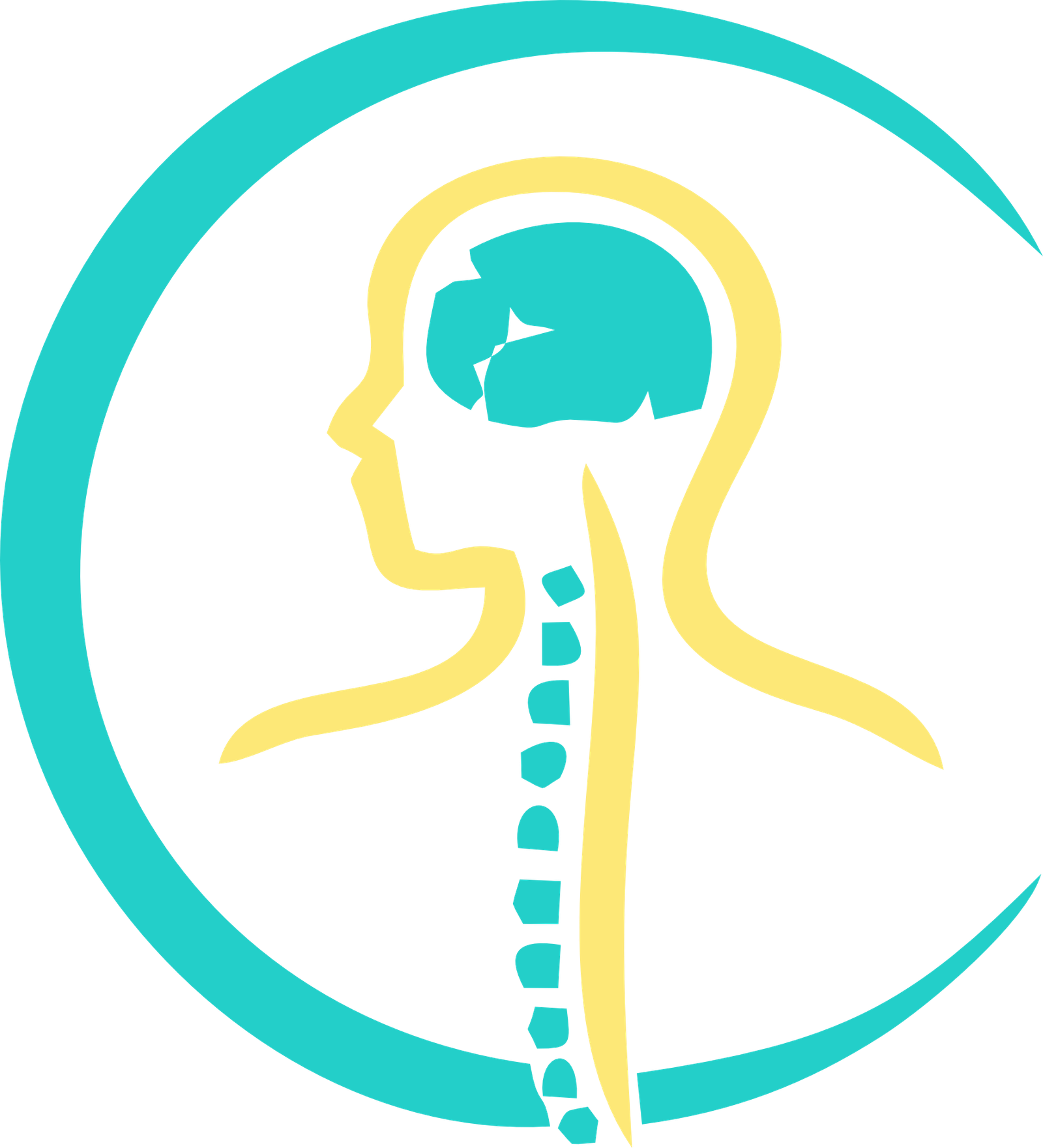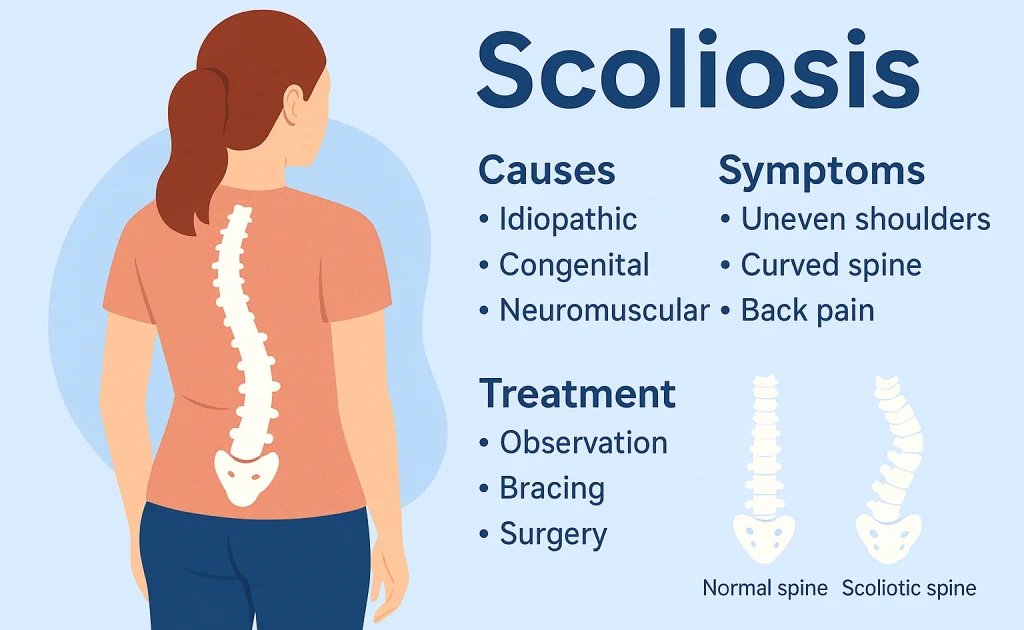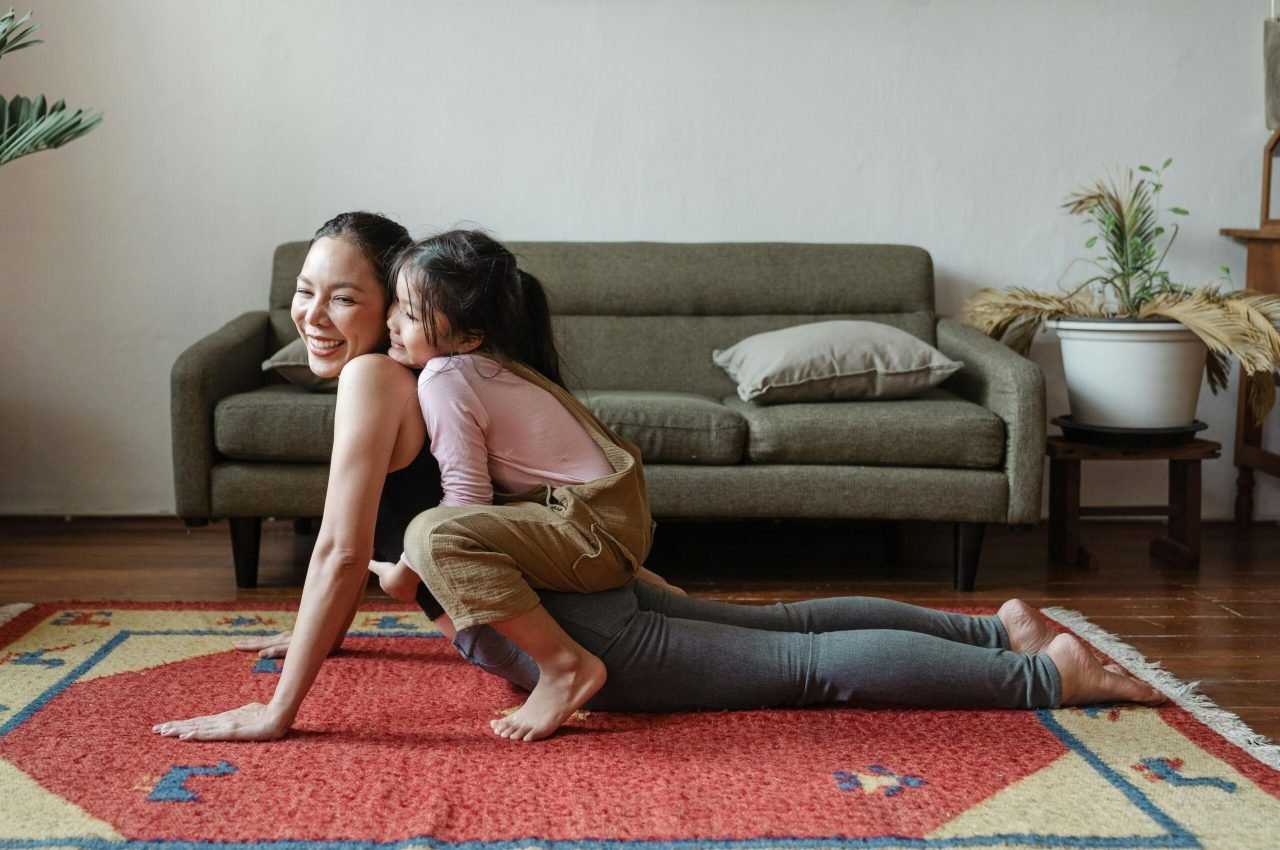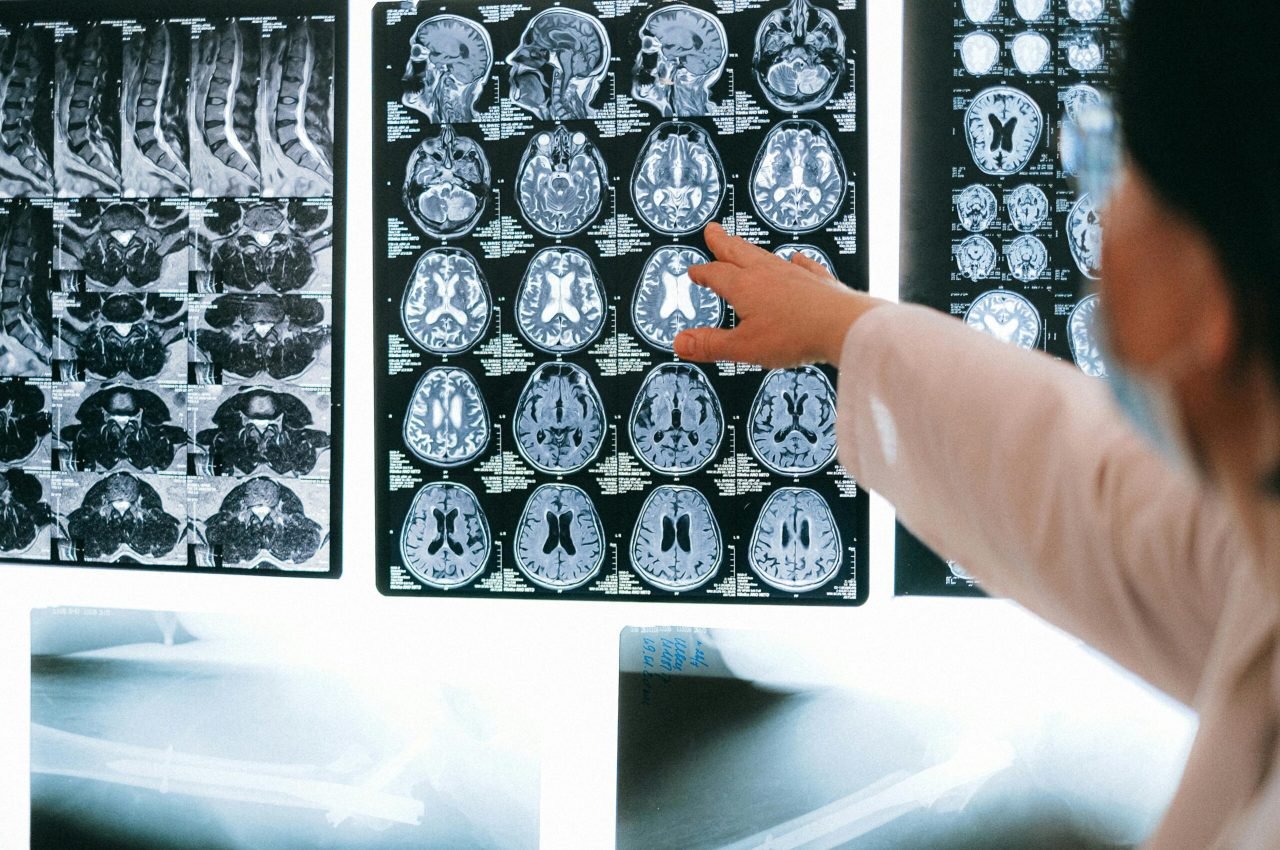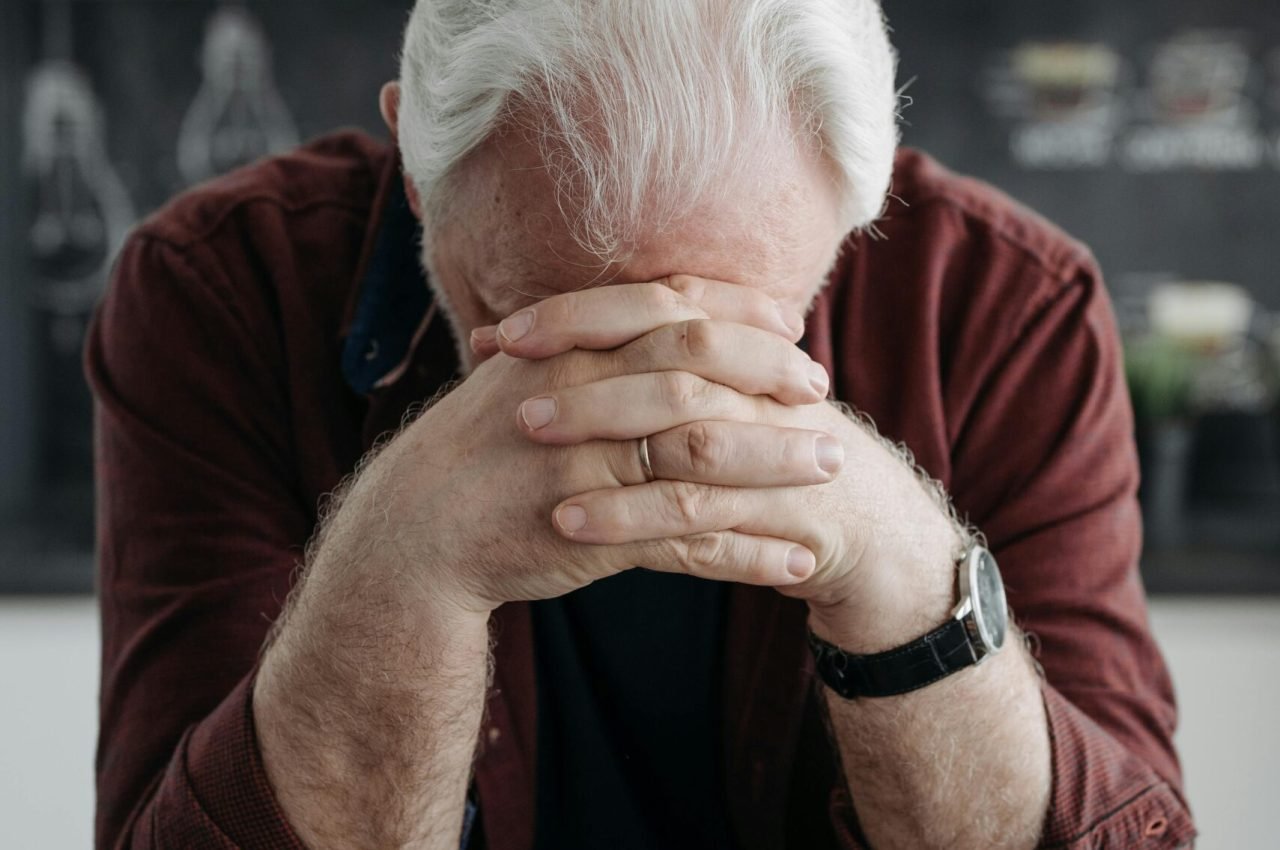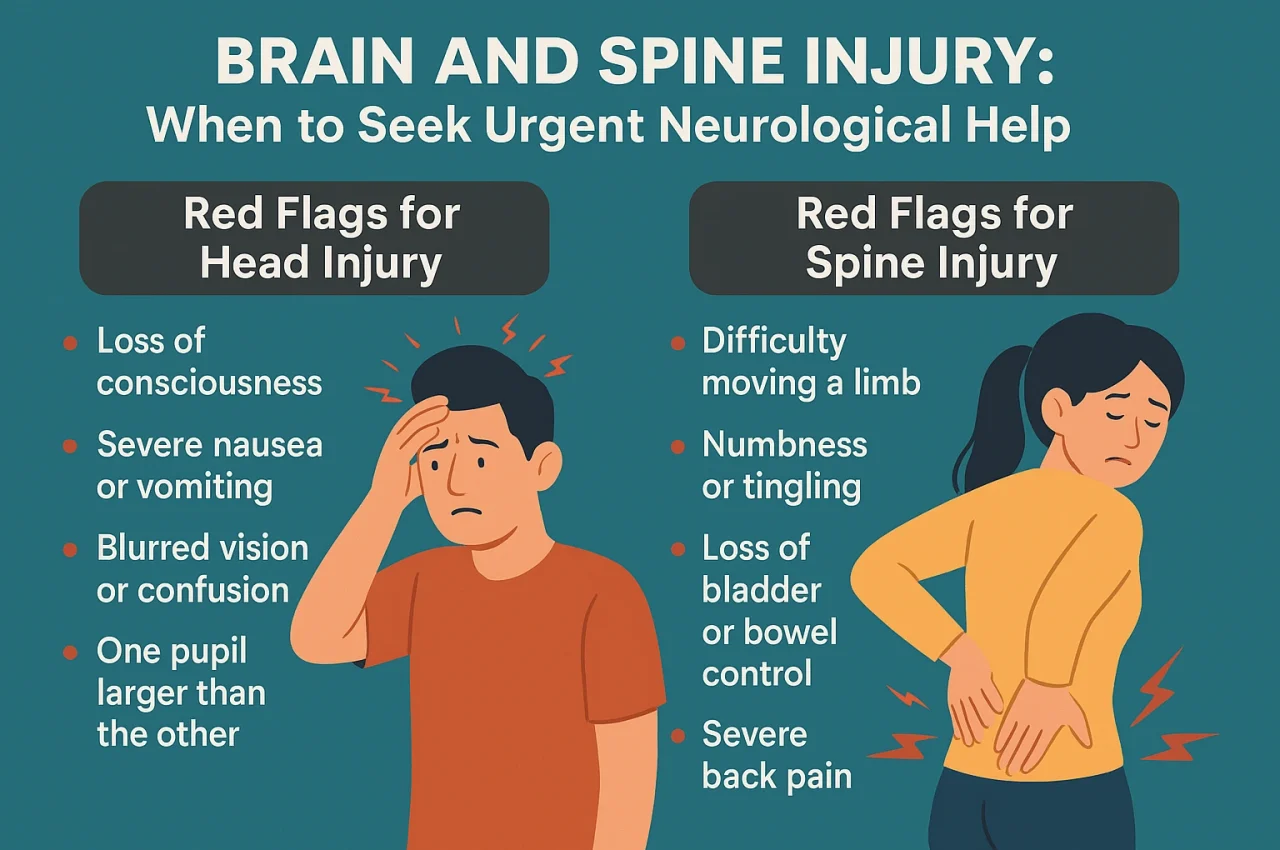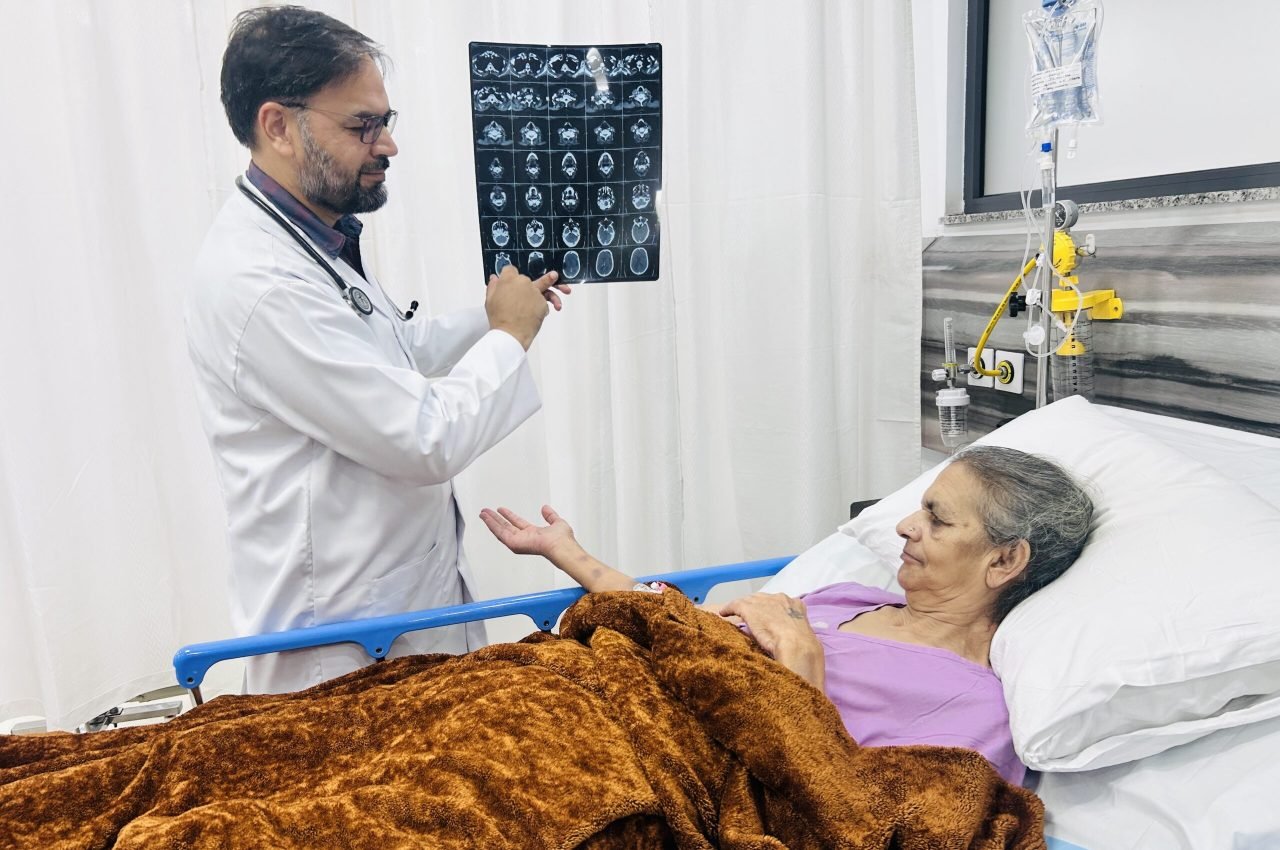What Is Scoliosis?
Scoliosis is a condition where the spine curves sideways, often in an “S” or “C” shape, instead of remaining straight. While mild cases might go unnoticed, more severe scoliosis can cause visible posture issues, back pain, and even breathing difficulties.
It can affect both children and adults, but early detection and treatment lead to the best outcomes.
At Dr. Anurag Lamba’s Neurology & Spine Clinic in Panchkula, we diagnose and manage scoliosis with the most advanced, patient-focused methods.
What Causes Scoliosis?
There are several reasons why scoliosis may develop. Some are known, while many cases (especially in children) are termed idiopathic, meaning no exact cause is found.
Common Causes:
- Idiopathic Scoliosis: Most common in teens during growth spurts (especially girls)
- Congenital Scoliosis: Present from birth due to malformed vertebrae
- Neuromuscular Scoliosis: Caused by conditions like cerebral palsy or muscular dystrophy
- Degenerative Scoliosis: Occurs in older adults due to disc degeneration or arthritis
- Injury or spinal surgery in rare cases
Signs and Symptoms to Look Out For
Scoliosis symptoms vary based on the severity of the spinal curve. Mild cases may have no symptoms at all, while moderate to severe scoliosis often includes:
- Uneven shoulders or waist
- One shoulder blade more prominent than the other
- Leaning to one side
- One hip higher than the other
- Back pain or stiffness
- Breathing difficulties (in severe curves)
- Fatigue from standing or sitting too long
💡 Related Read: Concerned about persistent back issues? Learn more in Chronic Back Pain: When to Consider a Specialist in Panchkula
How Is Scoliosis Diagnosed?
At our clinic, Dr. Lamba performs a detailed neurological and physical exam, often followed by:
- X-rays to measure the degree of the spinal curve (Cobb angle)
- MRI if underlying spinal or nerve issues are suspected
- Postural assessments and gait analysis for functional impact
Diagnosis is quick, non-invasive, and key to planning effective treatment.
Scoliosis Treatment Options
Treatment depends on the age, cause, severity of the curve, and symptoms.
1. Observation (for mild curves)
If the curve is less than 20°, especially in growing children or symptom-free adults, regular monitoring may be sufficient.
2. Bracing (for adolescents with progressive curves)
Braces can prevent further progression of the curve but won’t reverse it.
- Usually worn until growth stops
- Most effective when started early
3. Physical Therapy
Helps strengthen core muscles, improve posture, and relieve pain.
- Stretching and spinal realignment
- Schroth method (scoliosis-specific exercises)
4. Pain Management
For adults with scoliosis-related back pain, the following may help:
- Anti-inflammatory medications
- Physiotherapy and heat therapy
- Posture correction
5. Surgical Treatment (for severe or progressive cases)
Spinal fusion is considered when:
- Curve exceeds 45–50°
- Daily function is affected
- Nerve compression causes weakness or bladder/bowel issues
At Dr. Lamba’s clinic, surgical referrals are given only when absolutely necessary and after thorough patient counseling.
Scoliosis in Adults vs. Children
In Children (Adolescent Idiopathic Scoliosis):
- Most common between ages 10–18
- Often painless
- Bracing or early intervention can prevent future issues
In Adults:
- Often due to degenerative disc disease or untreated scoliosis from youth
- Causes back pain, spinal stiffness, and fatigue
- Treatment focuses on pain relief, mobility, and function
💡 Related Read: Explore Neurosurgery 101: Common Brain & Spine Procedures Explained for advanced spine care insights.
When to See a Neurologist or Spine Specialist
You should seek evaluation if:
- You notice a visible curve in the spine
- A child has uneven shoulders, hips, or walks with a lean
- You experience back pain, numbness, or tingling in the legs
- Your scoliosis is worsening or interfering with daily life
Early diagnosis improves treatment outcomes—especially in children whose bones are still growing.
Final Thoughts: You Can Live Well with Scoliosis
Scoliosis doesn’t always require surgery. With regular monitoring, physical therapy, and expert advice, many patients manage the condition without complications.
At Dr. Anurag Lamba’s Neuro-Spine Clinic, we help both children and adults navigate scoliosis confidently—with care that is tailored, transparent, and minimally invasive.
📍 Clinic Location: Panchkula, Haryana
📞 Call Us: +91 9780355355
📅 Book Appointment with Dr. Anurag Lamba
FAQ: Scoliosis
1. Is scoliosis painful?
Mild scoliosis may be painless. Adults with scoliosis often experience chronic back pain or stiffness.
2. Can scoliosis be cured?
While scoliosis isn’t always curable, it can be managed effectively, especially if detected early.
3. Do all scoliosis patients need surgery?
No. Surgery is reserved for severe curves. Most patients do well with bracing, therapy, or pain management.
4. Can scoliosis affect nerves?
Yes. In some cases, scoliosis can compress spinal nerves, causing numbness, tingling, or weakness in the legs.
